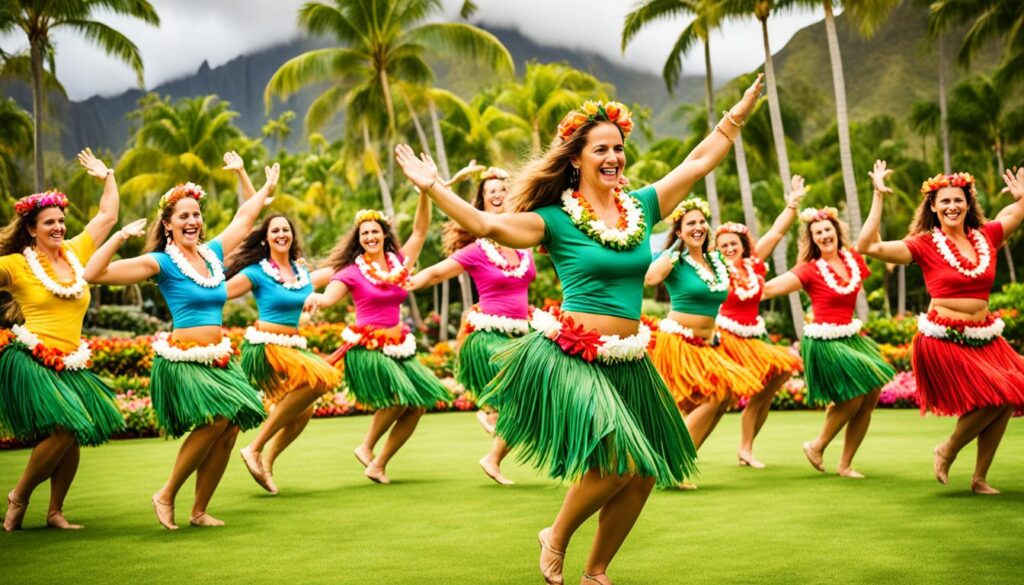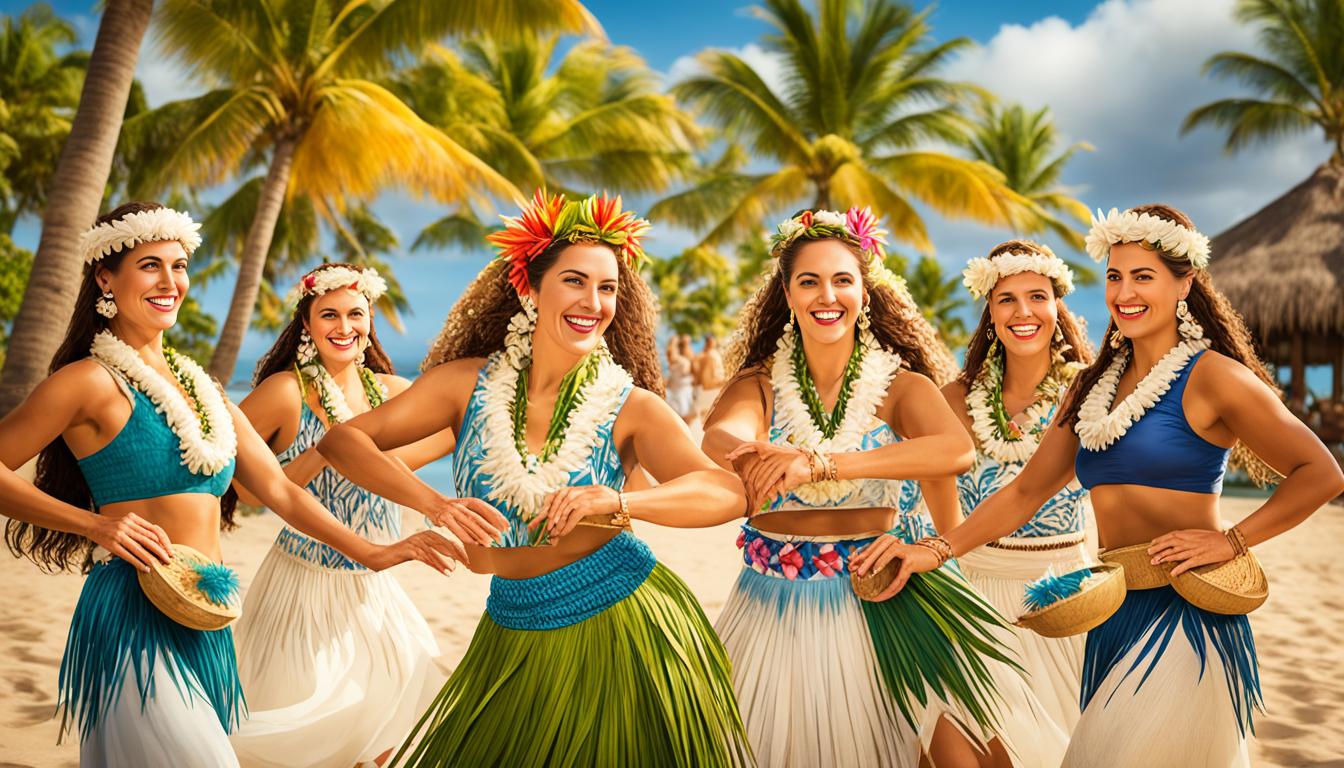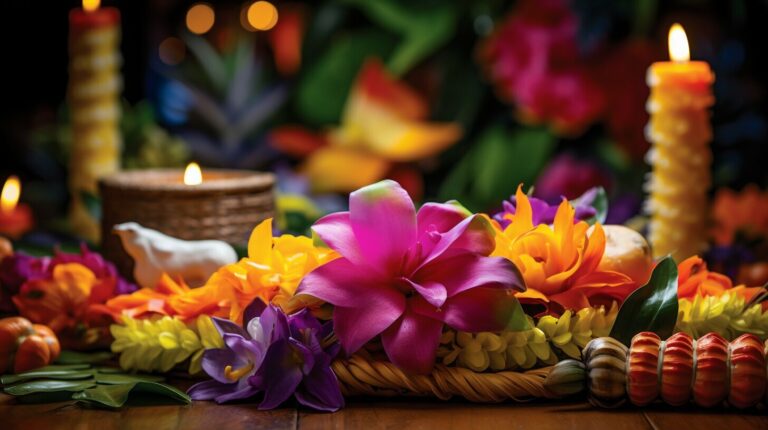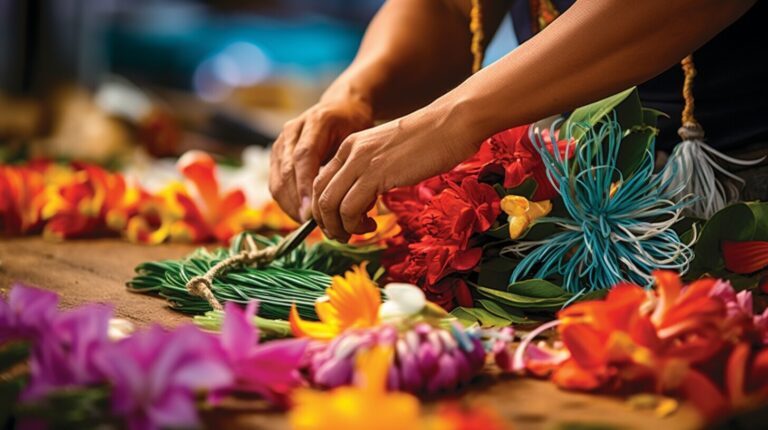Hula Dancing Hawaii: An Authentic Cultural Guide
Have you ever wondered if there’s more to hula dancing in Hawaii than meets the eye? Are you curious about the rich history and cultural significance behind this traditional Hawaiian dance? If so, get ready to dive into the captivating world of hula, where ancient traditions come alive through graceful movements and enchanting music.
Key Takeaways:
- Hula is a powerful art form that honors deities, shares history, and entertains in Native Hawaiian culture.
- Traditional hālau hula and kumu hula teach hula in its authentic form across the Hawaiian islands.
- Hula movements are precise and specific, with over 30 documented steps.
- Male hula dancers challenge misconceptions and play a significant role in preserving and passing down historical events and genealogical chants.
- Experiencing authentic hula shows and learning about its history can deepen appreciation for this captivating cultural practice.
A Brief History of Hula
Hula, a captivating dance form that holds deep cultural significance in Native Hawaiian culture, has a rich history that dates back to pre-contact Hawaiʻi. The ancient form of hula, known as hula kahiko, involved performers utilizing traditional percussive instruments while staying seated or kneeling during performances. This ancient style of hula was an integral part of Hawaiian rituals and ceremonies, serving as a medium to connect with deities and ancestors.
However, the arrival of Christian missionaries in the 1800s led to the suppression of hula due to its perceived immorality. The missionaries viewed the dance as pagan and sought to eliminate it from Hawaiian society. Despite the suppression, hula was revived and preserved by King David Kalākaua, also known as the Merrie Monarch, in the late 19th century. King Kalākaua recognized the cultural significance of hula and played a crucial role in its revival, ensuring that this cherished art form would not fade away.
In the 1960s, hula experienced a resurgence in popularity, thanks to the efforts of cultural practitioners and a growing interest in Hawaiian music and dance. Today, hula is performed in two main styles: hula kahiko, the ancient style with traditional chants and costumes, and hula ʻauana, the modern form characterized by graceful movements and accompanied by Western instruments, such as the guitar and ukulele. Both styles aim to preserve and share Native Hawaiian stories, traditions, and values, ensuring that the spirit of hula lives on.
Throughout its evolution, hula dance costumes have played an essential role in enhancing the visual aspect of the performance. Traditional hula dance costumes feature vibrant colors, intricate patterns, and natural elements reflecting the rich cultural heritage of the Hawaiian people. These costumes not only contribute to the aesthetics of the dance but also convey the symbolism and storytelling inherent in hula.
To get a glimpse of the profound connection between hula, history, and Hawaiian music, here is a visually engaging table showcasing the key milestones and influences in the history of hula:
| Time Period | Significant Events |
|---|---|
| Pre-contact Hawaiʻi | Hula kahiko: Ancient form of hula with percussive instruments |
| 1800s | Suppression of hula by Christian missionaries |
| Late 19th century | Hula revival by King David Kalākaua |
| 1960s | Resurgence of hula’s popularity |
| Present | Hula kahiko and hula ʻauana: Two main styles of hula that preserve and share Hawaiian culture |
Experience the enchantment of hula dance and immerse yourself in the captivating world of hula by joining hula classes, attending hula workshops, or witnessing mesmerizing hula performances filled with the vibrant music and graceful movements of this treasured Hawaiian art form.
The Movements of Hula

Hula is a dance form that is known for its precise and specific movements. It is comprised of over 30 documented steps, each with its own unique significance. Some of these steps include kaʻo, kāholo, hela, and Kalākaua. Students who wish to learn hula can do so through hula lessons in Hawaii or by utilizing online tutorials.
The arm movements in hula are particularly noteworthy as they often depict natural phenomena. These movements are carefully choreographed and require seamless integration with the accompanying music or chant. The dance itself is a beautiful blend of graceful movements and expressive storytelling.
Hula is a dance form that is accessible to students of all ages. In fact, some begin their hula journey as young as three years old. It is a dance that encourages continuous learning and growth. In addition to learning the physical movements, students are also encouraged to study the Hawaiian language to deepen their understanding of the cultural significance behind hula.
The Beauty of Hula
“Hula embodies the spirit of Hawaii and the stories of our ancestors. It is more than just a dance; it is a way of connecting with our roots and preserving our heritage.” – Kumu Hula Kealoha
Learning hula is a truly enriching experience. Through hula workshops and lessons in Hawaii, students have the opportunity to immerse themselves in the culture and traditions of the islands. They can gain a deeper appreciation for the beauty and richness of hula, while also discovering their own personal connection to this ancient art form.
The Cultural Significance of Male Hula Dancers
Male hula dancers defy gender norms and stereotypes, challenging misconceptions about hula as a feminine dance. Hula has deep cultural significance in traditional Hawaiian culture, and male dancers play a significant role in preserving and passing down historical events and genealogical chants. They demonstrate that dance knows no boundaries and redefine masculinity by integrating grace, fluidity, and expressiveness into their performances. Efforts are being made to dispel stereotypes and promote a more inclusive and respectful appreciation for male hula dancers through cultural organizations, dance schools, and community engagement initiatives.
Conclusion
Hula is a vibrant and captivating art form that goes beyond mere dance. It is a living expression of Hawaiian history, culture, and storytelling. Through the dedication of kumu hula and their students, this profound tradition has been preserved and continues to thrive.
Traditional hula attire, such as pāʻū (skirts), lei, and kūpeʻe (bracelets/anklets), adds another layer of significance to the performance. The intricate movements of hula, taught in hula workshops and lessons in Hawaii, convey deep meanings and portray the essence of the accompanying music or chant.
By witnessing authentic hula performances and learning about the rich hula dance history, visitors to Hawaii can gain a deeper appreciation for this cultural practice. Experiencing the power and beauty of hula firsthand allows individuals to connect with the spirit of the islands and understand the importance of preserving this ancient art form for future generations.







